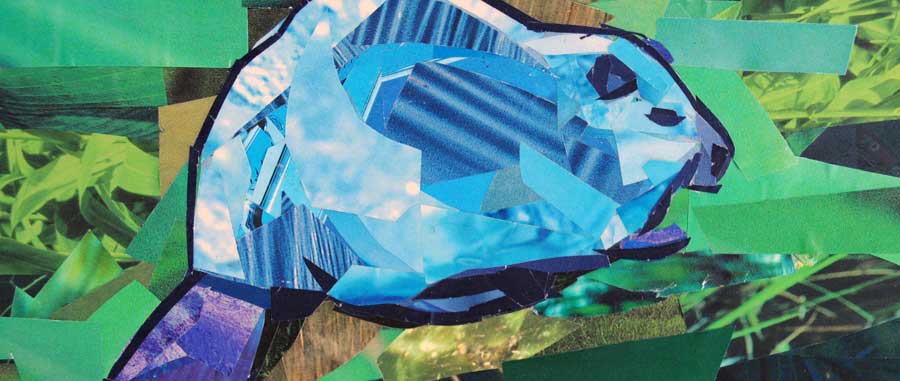Activities for this Lesson Plan
Ways to Portray Animals in Art
Animal Collages
Setting and Color
Resources
Make an Animal Collage (worksheet)
Write an Animal Report (worksheet)
Glossary
Time: Two 45 minute class periods
Grade Level: Middle School
School Subject: Art and Science (paper writing)
Objectives:
Students will:
- Study Megan Coyle’s animal collages and respond to questions.
- Discuss the similarities and differences in Coyle’s animal collages.
- Create a paper collage of an animal using the “painting with paper” technique.
- Write a report about the animal used in the collage.
Materials:
- Paper
- Pencil
- Scissors
- Acid-free glue sticks
- Magazines
- Construction paper (assortment of colors)
Lesson:
Class Period One
- Have students read the brief biography of Megan Coyle and study her animal collages.
- Have students read and respond to questions from the Student Activities: Ways to Portray Animals in Art, Animal Collages, and Setting and Color.
- Discuss Megan Coyle’s “painting with paper” technique. How does she use texture and color for her animal collages? How are her animal collages different than her portraits?
- Discuss the importance of setting and color. How can they convey a certain mood? What can both do to tell you more about a specific animal?
- Remind students that next class period they will make their own animal collages.
Class Period Two
- Students will make a collage.
- Distribute collage making materials. Instruct students sketch the animal first before collaging pieces of paper on top of the drawing. The sketch will serve as a guide for the students to help them get the likeness of the animal.
- Have students finish and hand in their work.
- For homework, have students write a report about the animal they collaged.
Assessment:
To evaluate the student artwork, ask:
- Did the student complete an animal collage?
- Did the student create a setting for the animal? Do the colors create a certain mood?
- Does the report thoroughly and accurately give you more information on the animal? Did the student share information on the animal’s habitat, where it’s found in the wild, what it eats, who its predators are, and so on and so forth?


